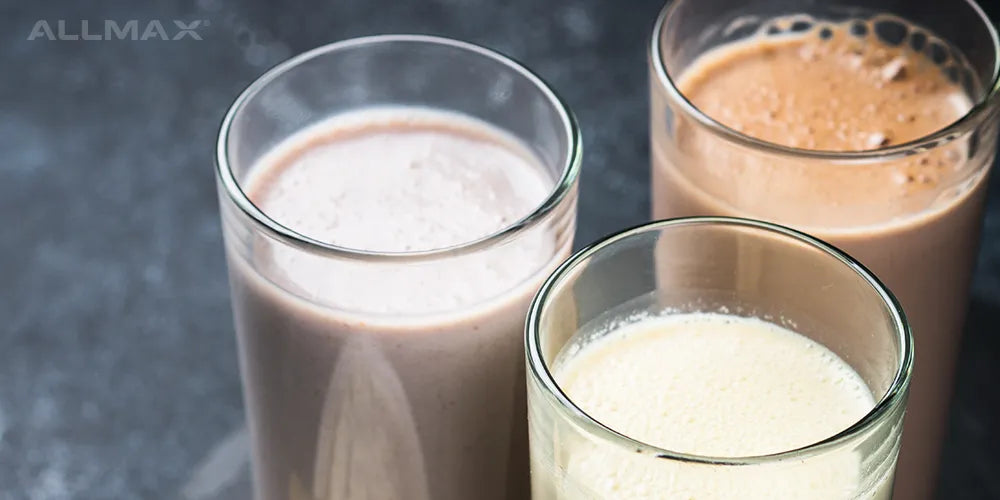For years now, carbs have been vilified in diets as the single biggest source of weight gain. There’s no doubt about it, eating too many carbs can leave you feeling listless, bloated and lethargic. And if you’ve experimented with ketogenic diets, you’ve certainly seen the effects that getting rid of carbs can have on fat loss. But is cutting them from your diet completely really the best solution? Moreover, is it even realistic? How about carb cycling meal plan and does it benefits? Ketogenic diets can certainly be great for weight loss, but for most people, they just aren’t practical as a lifestyle choice. And considering that, how can you hope to ever maintain a consistent and healthy diet when you’re stuck in a back-and-forth rebound between eating carbs and then depriving yourself? Let’s face it: Carbs are delicious. Warm bread with butter, baked ziti with cheese sauce, oven-roasted potatoes … who wants to live a life without carbs? Thankfully, there’s a way to have your cake, eat it and lose weight too. It’s called carb cycling.
The Benefits of Carb Cycling
The concept of carb cycling is simple: You alternate the days in which you eat carbs to maximize your body’s glycogenic response and boost your metabolism. A typical carb cycling meal plan is to go two days eating low carbs and on the third day, carb loading. The idea is that your body gets acclimated to this routine and learns to use fat as fuel, but on days you’re carb loading, it uses glycogen instead. Acclimating your body to this routine can improve workout performance. If you alternate your workout plan to coincide with days you’re carb loading, you train your body to use carbohydrates efficiently. Instead of eating that tasty pasta and having it go straight to your thighs, you teach your body to use it as immediate fuel. It’s not a new concept either—this is precisely why high-endurance athletes utilize carb loading the day before they need to perform at their maximum. Another benefit to carb cycling is that it increases your body’s insulin sensitivity. This is a measure of how much insulin your body needs to release to use up stored glucose. Increasing your body’s sensitivity to it can dramatically cut fat loss, not to mention help prevent serious health problems like heart disease and diabetes. Last but certainly not least, carb cycling can decrease bloat and improve your body’s water balance. One of the main causes of bloating is from consuming too many carbs, so acclimating your body to a carb cycling plan can cut the bloat while still giving your body the fuel it needs.
The Carb-Cycling Plan
A typical carb cycling plan alternates between low- and high-carb days over six days with the seventh day as an off day. Of course, depending on your needs and goals, you may want to alter the plan. For example, for burning more fat, you could have two days of low carbs followed by one day of carb loading. On the flip side, if you’re looking to pack on muscle, and you’re in the gym doing intense training, you’ll want to have more carb days instead. Regardless of your goals and needs, it’s critical that you pay attention to your progress so that you can adjust your plan accordingly so that you can get the best results.
Choose the Right Carbs
A lot of people see carb cycling as an excuse to eat whatever carbs they want on days they’re carb loading and relegate the low carb days to eating healthy. This is, of course, a mistake. Even though carb-loading packs a one-two punch for fat burning, it’s still important that the majority of the carbs you do eat are healthy, complex carbohydrates like whole grains, fruits and legumes. Just as important as eating the right food on low-carb days: Get your protein from lean meats like fish and chicken, and be sure you eat plenty of non-starchy vegetables—steer clear of the corn and potatoes.
Stay on Track
Some trainers suggest having a day of rest from your routine where you’re allowed to eat what you want. But you have to make sure this isn’t hindering your progress. Oftentimes, if we get into the mindset of indulging after depriving ourselves, we end up completely mitigating the progress we’ve made by eating far too many calories than we need. Thankfully, carb cycling gives us a little wiggle room when it comes to incorporating foods that we love to indulge in. If you’re the kind of person that loves sweets, for example, factor that into your plan and indulge yourself once or twice a week on your high-carb days.
Create Your Meal Plan
Creating a daily meal plan is critical to succeeding with any diet, and carb cycling is no different. For carb cycling to work best, you need to consume slightly fewer calories on no-carb days than what you do on carb days. While nutritional needs vary from person to person, a general guideline is that men should consume around 1,500 calories and women should consume about 1,200 calories on low-carb days. On high-carb days,
caloric intake can be slightly higher. Be sure to eat breakfast as soon as you can once you wake up, even if you aren’t hungry. This can serve to satiate your hunger throughout the day and prevent you from overeating. Also, keep in mind that you don’t need to completely change your eating habits overnight. The objective here is to slowly acclimate yourself to eating an array of healthy and nutritious food while limiting your carb intake on your off days. That said, here’s what a low-carb day might look like:
Breakfast: Poached eggs with bell pepper and mushrooms.
Lunch: Grilled chicken breast and spinach.
Dinner: Grilled tilapia with steamed broccoli.
Snack: Protein shake. And a high carb day:
Breakfast: Oatmeal with nuts and berries.
Lunch: Chicken salad sandwich on whole-wheat bread.
Dinner: Grilled chicken, pasta and green beans.
Snack: A server of your favorite fruit.
Tips to Maximize Your Diet
Carb cycling meal plan alone can be immensely effective, but regardless of the diet you’re utilizing, there are some tips that can improve your overall health and physique. For starters, try to keep the times you eat consistently every day and within a specific window of time. Research is revealing that people who maintain a feeding window of about eight hours are able to metabolize fatty acids better, which improves insulin sensitivity. It also serves to promote a fasting state which can help remove damaged cells and restore healthy ones. Be sure to eat plenty of protein at every feeding. Healthy forms of protein also help to stabilize blood sugar and maintains muscle mass. Getting plenty of protein will also help prevent muscle loss when you have a caloric deficit—such as your low-carb days. It’s also critical to get plenty of fiber at every meal. Even on days when you’re skipping carbs, vegetables are critical to helping improve your body’s ability to regulate blood sugar, which in turn helps regulate weight. There are numerous studies showing that people who consume a high-fiber diet consistently maintain healthier
body weight compared to those who do not.
Use Carb Cycling Appropriately
Carb cycling meal plan has clear benefits, but like any other diet, you have to practice it with care. It’s important to understand that the carbs you eat do more than just supply your body with fuel—they also contain nutrients, vitamins and minerals that we need to be
healthy and fit. The whole point of carb cycling is to use carbohydrates smartly, not to cut them out to the detriment of your health. It’s also important to consider that this style of eating isn’t for everyone. Eating a low carb diet, even one where you’re cycling them, can have side effects for some people. If you notice that you’re extremely tired, cranky or having a hard time focusing on days without carbs, it’s a good idea to stay safe, forego carb cycling meal plan and resume your normal diet.



